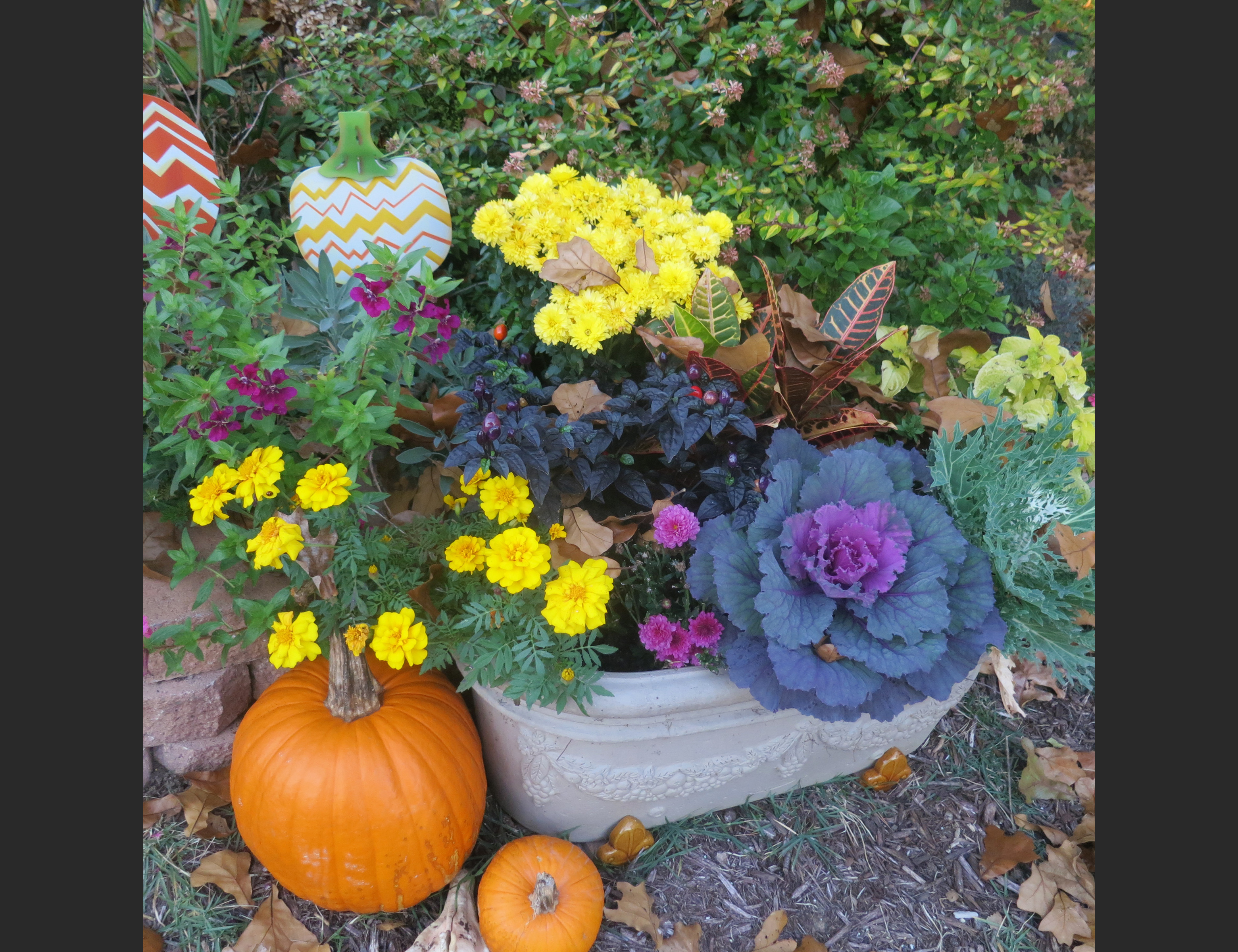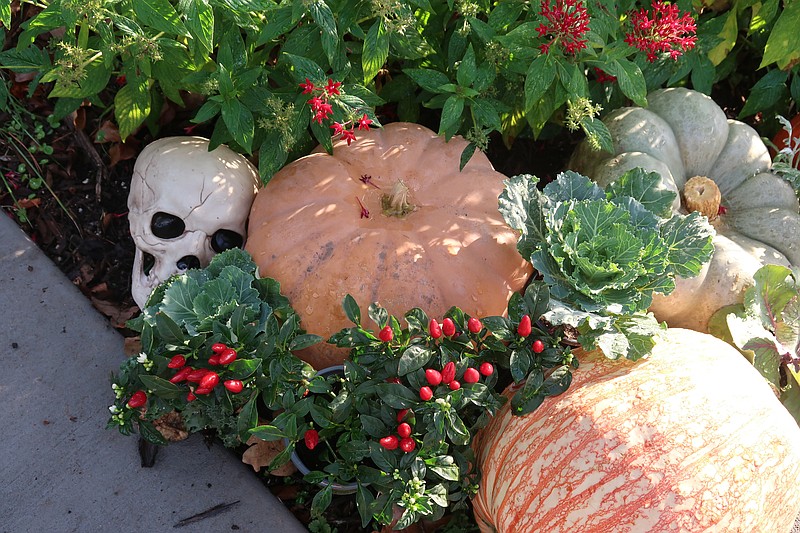OCTOBER
Finally, we have a break in the heat and humidity. July and September were both too hot and dry.
I hope it is safe to say we have seen the last of almost triple digits, but we still do need rain. Let's hope October is kinder to us.
◼️ Leaves are falling in earnest as dry plants try to conserve as many resources as possible. Try to keep up with watering chores as much as you can. How healthy our plants are as they head into dormancy can determine how well they survive the winter and perform next spring.
◼️ Most gardeners are ready to call it quits for this gardening season, but the fall season is finally kicking in. It is time to get the pansies and violas, flowering kale and cabbage planted, and to plant fall and winter vegetables. Water is needed to get those new gardens established.
◼️ The cooler weather of fall is a great time to get out and clean up the garden. Sanitation is important in vegetable and flower gardens. Leaves are falling in earnest and should be raked — shredded if possible — and added to the compost pile. Cut back perennials as they begin to die back, and as you pull up summer annuals, those go into the compost as well.
◼️ Cannas continue to be plagued by the leaf roller, and it lives in spent debris in the garden, so be sure to cut back and get rid of the spent foliage when they begin to die back or immediately after a frost.
◼️ Add a fresh layer of mulch in all gardens.
◼️ Take inventory of what worked and what didn't.
◼️ The only plants you should be fertilizing now are winter annuals and vegetable gardens. Everything else is preparing for winter and should not be encouraged to keep growing. Monitor for moisture needs.
 Cheerful groups of potted mums, marigolds and ornamental flowering kale combine with crafts to brighten the garden in the fall. (Special to the Democrat-Gazette/Janet B. Carson)
Cheerful groups of potted mums, marigolds and ornamental flowering kale combine with crafts to brighten the garden in the fall. (Special to the Democrat-Gazette/Janet B. Carson)
◼️ If you need a quick pick-me-up with color, there are myriad pumpkins and gourds that can add instant color — and don't have to be watered. Mums and asters can round out the color. While the latter two are perennial plants, many gardeners use them as seasonal color.
◼️ Spring-blooming bulbs can be planted from now through December. I like to wait for the soil to cool off a bit, but if you are planting pansies on top and are ready to plant, plant your bulbs now too.
◼️ The recent cool nights are your signal to start moving houseplants indoors. The transition period is when outside and inside conditions are similar. Cut way back on how much you water indoors, and do move them to a sunny location inside. Inspect your plants as you move them so you don't move insects inside with them.
◼️ Stop dead-heading perennials now so they can set seeds to self-sow, or to feed birds this winter. If you have spring or summer-blooming perennials that are too crowded, or need to be divided, now is a great time to do so as their season is ending. Dig up the clump and separate them into several new plants before replanting. Water and mulch, and they will rebound better next spring.
◼️ October is a great month to plant wildflower seeds. Many wildflowers are perennials and will return year after year. Many perennials take an extra season to bloom when grown from seed, while the plant establishes itself. Fall planting can actually allow for some blooming next spring or summer, but to ensure more blooms in year one, add some annual flowers into your seed mix. Make sure your planting site has been cleared of weeds and grass before planting.
Janet Carson's blog is at arkansasonline.com/planitjanet.

